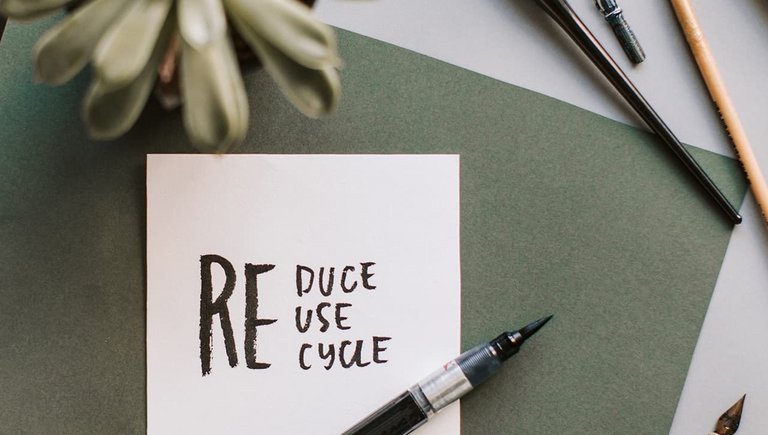
- Blog
- Published on: 28.10.2020
- 4:29 mins
Blockchain and Sustainability Part 1: Confidence in the Circular Economy
Confidence in the Circular Economy
The topic of sustainability is becoming increasingly important for companies.
A study conducted by the Boston Consulting Group is just one such example which shows that sustainability is becoming an increasingly important subject for companies. According to this study, the purchasing decision of around 60 percent of true-luxury consumers is influenced by how a company treats people, animals and the environment. In 1990, the British economist David W. Pearce presented the concept of the circular economy as a way of concretizing sustainable behavior. In contrast to the typical linear economy, products are not disposed of at the end of their life cycle, but are instead recycled. The three ‘R’ principles of reduce, reuse and recycle are central to this.
In order for the idea of a circular economy to work and for the three principles to be implemented, all stakeholders along the entire value chain must be involved and must exchange information with each other. The continuous flow of information is a key requirement if products are to be able to embark on a second life at the end of their first life. A second key requirement is the assurance of all parties concerned that the information provided is correct. In practice, the circular economy often fails because it is enormously challenging, time-consuming and expensive to meet both of these requirements. This is all the more true if the stakeholders are spread around the globe and there is no relationship of trust between them. Economic relationships that would actually be possible and meaningful are then not formed.
The Relevance of Blockchain to the Circular Economy
In our view, blockchain technology is an excellent means for eliminating the current deficit effectively and efficiently. This is due to the fact that in a blockchain, all relevant information about a product can be stored along the entire value chain in a way that cannot be altered, or at least such that the authenticity and immutability of the information can be certified. The information and certificates can then be viewed by the different participants. Consensus on the trueness of the information can be established without an intermediary, using algorithms such as proof of work, proof of stake or proof of authority. This results in complete transparency and full traceability, which replaces the trust that would otherwise be required and ensures a high degree of security. Consequently, not only does it becomes much easier to exchange information and thus establish economic ties – comprehensive documentation on the nature, use and condition of a product also leads to simplified and more effective reuse and recycling processes.
The myriad advantages of the technology mean that blockchain is also being discussed by NGOs and trade unions as a way to realize transparency of the supply chain within the framework of supply chain legislation. The German Federal Government has also taken up the subject of blockchain. Its strategy states: “ The Federal Government is examining whether blockchain technology can be used and promoted, firstly, to secure supply chains that are environmentally and socially sustainable, efficient and secure, and secondly to contribute to the closing of product cycles.”
Blockchain and Sustainability – Can This Even Work?
At the same time, the German government’s position paper emphasizes that sustainability must be a decisive criterion for implementing blockchain applications. For example, the government is committed to supporting only projects that use energy-saving consensus mechanisms – that is, proof of stake or proof of authority, but not proof of work. The proof of work method used in the well-known cryptocurrencies Bitcoin and Ethereum is considerably more energy-intensive than the other methods, since it uses computing power as security for the verification of blockchain transactions.
Because a large proportion of people equate blockchain technology with cryptocurrencies, it is wrongly assumed to have a fundamentally high energy consumption. However, high computing power is not necessarily required in order to implement a blockchain application in the circular economy. The situation is similar in terms of the supposedly enormous storage requirements, which results from the redundant data storage in the distributed network. In this respect, it is important to design blockchain applications according to the principle of “sustainability by design”: It is vital that sustainability criteria are taken into account right from the design phase and reconciled with functionality criteria. If this insight prevails, the necessary acceptance will thereby be created.
Sustainability by Design: Six Steps toward a Sustainable Blockchain Project
In order to make blockchain projects sustainable, our experience shows that a step-by-step approach is likely to lead to success:
Step 1: Education
First of all, it is important for companies to build up knowledge about the comparatively new technology. This also involves developing a realistic and critical attitude. There is no doubt that blockchain contains enormous potential – and it is far more than just hype. However, blockchain is not the answer to all issues, nor does it always contribute to sustainability.
Step 2: Ideation
In this respect, companies should identify specific scenarios in which the use of blockchain could be appropriate. Design Thinking workshops with interdisciplinary teams are helpful here. Important: An actual problem must first be identified before considering blockchain as a possible solution.
Step 3: Evaluation
The ideas outlined should then be evaluated to establish whether blockchain or what type of blockchain is actually appropriate and whether it is the best technology to meet the formulated requirements. It may be that another distributed ledger technology is much better suited or that a completely different approach must be taken. The relevance of blockchain to the solution must be weighed against sustainability requirements.
Step 4: Conception
When opting to use blockchain for a specific use case, the specific blockchain architecture should be conceived. The sustainability requirements must be incorporated into the technical design of the application. This also includes identifying the relevant partners in the respective ecosystem and finding the correct partners.
Step 5: Prototyping
A prototype should be implemented and tested as part of a proof of concept. This makes it easy to see whether the use case is feasible and at which points it still needs to be adjusted.
Step 6: Integration
If the prototype works as intended, it should be developed into a product and integrated into existing systems if necessary – in order to supplement ERP systems in a meaningful way, for example. Remember: sustainable also means avoiding duplication of existing systems and processes.
